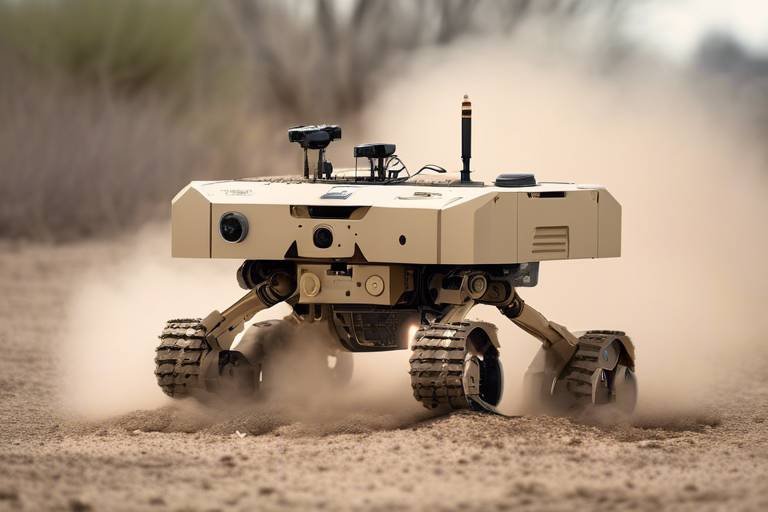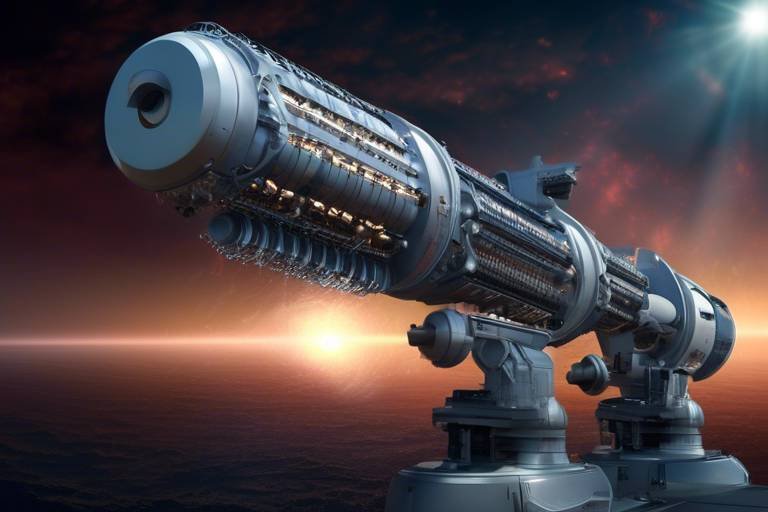Innovations in Military Supply Chain Technologies for the Future
The landscape of military operations is rapidly evolving, and at the heart of this transformation lies the military supply chain. As we embrace the digital age, innovations in supply chain technologies are not just enhancing efficiency; they are redefining how military forces operate in the field. Imagine a world where logistics are as agile as the soldiers on the ground, where supplies are delivered with pinpoint accuracy, and where the fog of war gives way to clarity through technology. This is not science fiction; it's the reality that cutting-edge advancements are bringing to military logistics.
In recent years, the military has begun to adopt various technologies that promise to enhance operational readiness and streamline processes. From automation to 3D printing, these innovations are addressing the unique challenges faced by military supply chains. As we delve deeper into this topic, we will explore how these technologies are reshaping the logistics landscape and what this means for the future of military operations.
One of the most significant trends in military supply chains is the move towards automation. Think of automation as the backbone of modern logistics—it reduces human error and accelerates processes, allowing military personnel to focus on what they do best: executing missions. Automated systems can manage inventory, track shipments, and even forecast demand, ensuring that troops have the supplies they need when they need them. This shift not only enhances efficiency but also significantly improves operational readiness.
Moreover, the integration of blockchain technology is revolutionizing military supply chains by providing unprecedented transparency and traceability. Imagine being able to track every component of a supply shipment in real-time, ensuring accountability at every step of the process. This level of transparency is crucial in military operations, where the stakes are high, and the margin for error is slim. Blockchain secures transactions and enhances trust among stakeholders, making it an invaluable tool for military logistics.
As we explore these innovations, we cannot overlook the role of artificial intelligence (AI). AI is not just a buzzword; it is a game-changer for military supply chains. By leveraging data analytics and machine learning, AI can predict demand patterns and optimize inventory levels, ensuring that military units are always equipped with the right materials. This proactive approach to logistics minimizes waste and maximizes efficiency, allowing for more effective resource allocation.
In conclusion, the innovations in military supply chain technologies are paving the way for a more efficient and responsive military. From automation and blockchain to AI and 3D printing, these advancements are not just enhancing logistics; they are fundamentally changing the way military operations are conducted. As we look to the future, it is clear that these technologies will play a critical role in ensuring that our armed forces are prepared for any challenge that lies ahead.
- What is the role of automation in military supply chains?
Automation streamlines logistics processes, reduces human error, and enhances the speed of operations, allowing military personnel to focus on mission execution. - How does blockchain technology improve military logistics?
Blockchain provides transparency and traceability in supply chains, securing transactions and enhancing accountability among stakeholders. - What impact does AI have on military supply chain management?
AI predicts demand and optimizes inventory levels, improving resource allocation and operational readiness. - What are the advantages of 3D printing in military logistics?
3D printing enables on-demand production of essential parts, reducing lead times and enhancing flexibility in manufacturing.
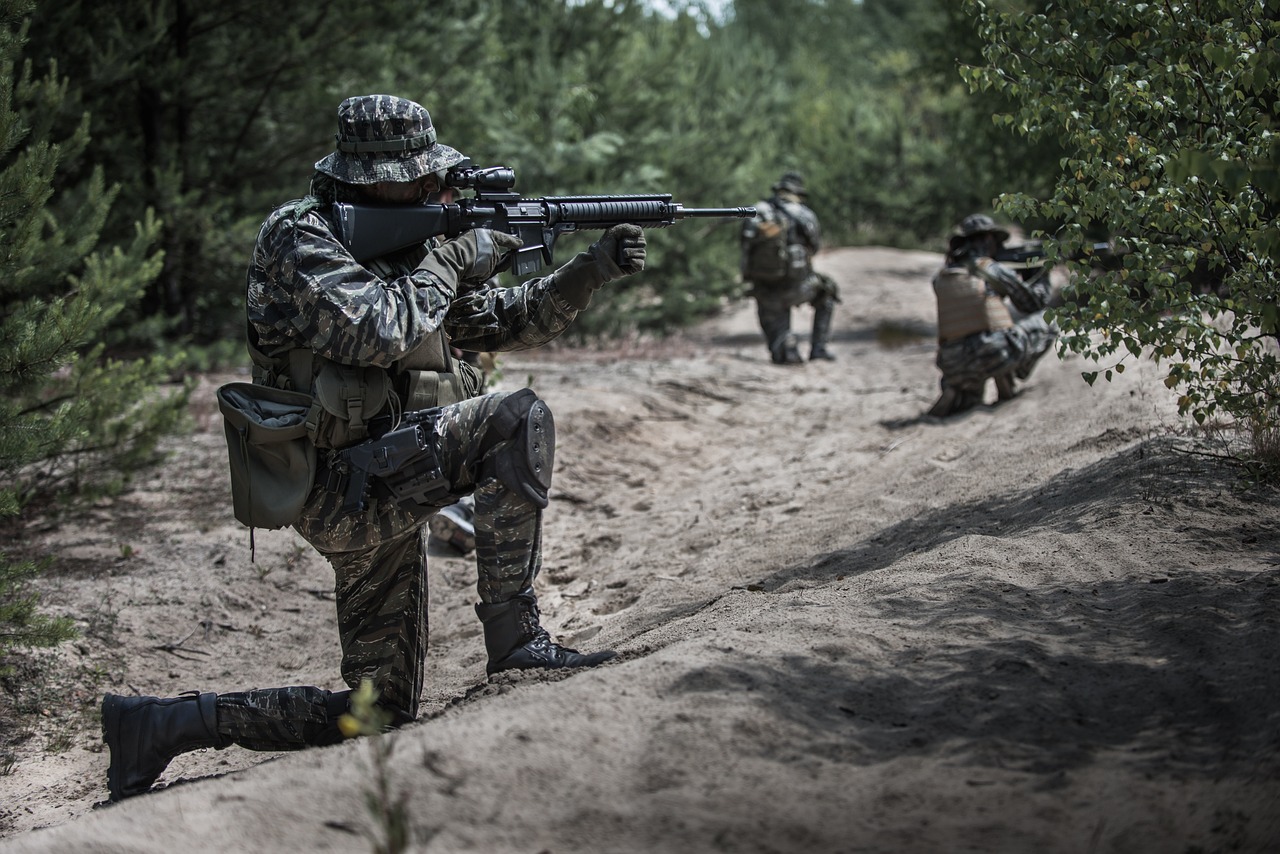
Automation in Logistics
In the ever-evolving landscape of military operations, automation is becoming the backbone of logistics, transforming how supplies are managed and delivered. Imagine a world where the complexities of military logistics are simplified through advanced technologies, making processes not just faster but also more reliable. Automation in logistics is not merely a trend; it’s a revolution that promises to reduce human error, enhance speed, and streamline operations. With the integration of automated systems, military supply chains can operate with greater efficiency, ensuring that troops receive the necessary resources when they need them most.
At the heart of this automation are sophisticated systems such as automated inventory management, robotic process automation, and drone deliveries. These technologies work in harmony to create a seamless flow of supplies from warehouses to the front lines. For instance, automated inventory management systems utilize sensors and RFID technology to track stock levels in real-time. This means that military planners can avoid the pitfalls of overstocking or stockouts, ensuring that every resource is accounted for and readily available. Imagine a scenario where a military unit is in a critical situation, and instead of waiting for supplies to arrive, they can have real-time insights into what’s available and what’s on the way. This not only saves time but can also be a matter of life and death.
Furthermore, the use of robotic process automation (RPA) in logistics can handle repetitive tasks such as data entry and order processing. By delegating these mundane activities to machines, human personnel can focus on more strategic tasks that require critical thinking and decision-making. This shift not only enhances productivity but also fosters a more agile and responsive supply chain. The ability to quickly adapt to changing conditions on the battlefield is invaluable, and automation plays a crucial role in achieving that agility.
Another exciting frontier in military logistics is the deployment of drones for supply deliveries. These unmanned aerial vehicles (UAVs) can navigate challenging terrains and deliver supplies directly to troops in remote locations. Picture a drone soaring over rugged mountains, delivering much-needed medical supplies or ammunition to soldiers who are cut off from traditional supply routes. The implications of such technology are profound, as it not only speeds up delivery times but also minimizes the risk to human life during transport missions.
As we look to the future, the integration of automation in military logistics is set to redefine operational readiness. The benefits are clear: enhanced efficiency, reduced costs, and improved supply chain visibility. However, it’s essential to recognize that while automation brings numerous advantages, it also requires a cultural shift within military organizations. Training personnel to work alongside these automated systems is crucial for maximizing their potential. As we embrace this technological revolution, the military must also address the challenges that come with it, such as cybersecurity risks and the need for robust data management strategies.
| Benefits of Automation in Military Logistics | Description |
|---|---|
| Increased Efficiency | Automated systems streamline operations, reducing time spent on manual tasks. |
| Reduced Human Error | Automation minimizes mistakes that can occur in human-driven processes. |
| Real-Time Visibility | Instant tracking of supplies allows for better planning and resource allocation. |
| Cost Savings | Efficiency gains lead to lower operational costs over time. |
In conclusion, automation in military logistics is not just about technology; it’s about enhancing the capabilities of military forces to operate more effectively in complex environments. As we continue to explore and implement these innovations, the military supply chain will become increasingly robust, ensuring that our troops are always equipped and ready for whatever challenges lie ahead.
- What types of automation are commonly used in military logistics? Automated inventory management, robotic process automation, and drone deliveries are among the most common.
- How does automation improve supply chain efficiency? By streamlining processes, reducing human error, and providing real-time visibility, automation enhances overall operational readiness.
- What are the challenges associated with implementing automation? Challenges include cybersecurity risks, the need for personnel training, and data management issues.
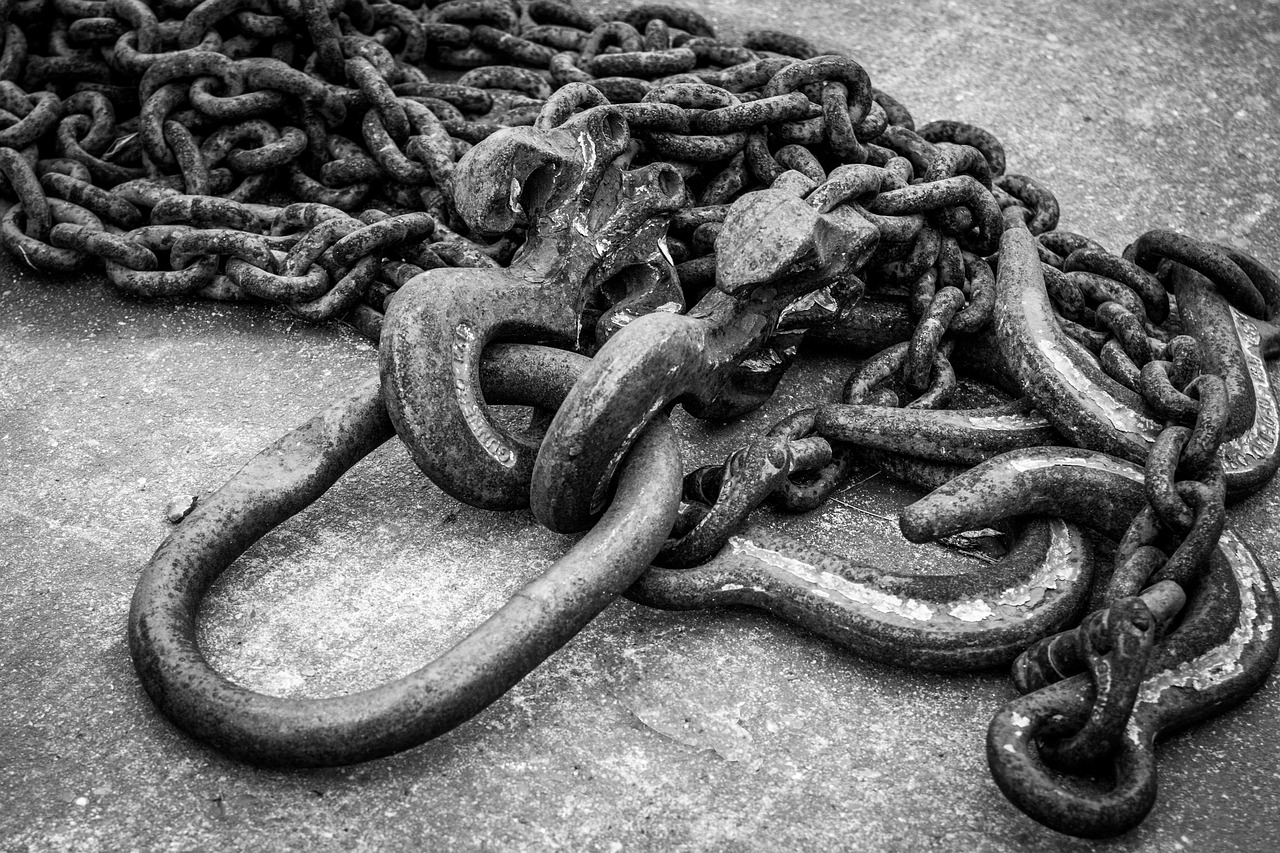
Blockchain for Transparency
In the rapidly evolving landscape of military supply chains, blockchain technology is emerging as a game-changer, offering a level of transparency and accountability that was previously unimaginable. Imagine a world where every transaction, every shipment, and every supply request is recorded on an immutable ledger, accessible to all authorized parties in real time. This is not just a fantasy; it’s the power of blockchain in action, fundamentally transforming how military logistics operate.
One of the most compelling aspects of blockchain is its ability to provide unprecedented traceability. Each component of the supply chain can be tracked from the manufacturer to the end-user, ensuring that every item is accounted for and verified. This traceability is crucial in military operations where the integrity of supplies can mean the difference between success and failure. With blockchain, military units can verify the authenticity of their supplies, reducing the risk of counterfeit parts entering the supply chain and compromising mission readiness.
Furthermore, the decentralized nature of blockchain means that data is not stored in a single location, making it less vulnerable to tampering or cyberattacks. This is particularly important in military contexts where security is paramount. By utilizing a distributed ledger, military organizations can ensure that all stakeholders have access to the same information, fostering a culture of collaboration and trust among different branches and units.
To illustrate the impact of blockchain on military supply chains, consider the following table that outlines some key benefits:
| Benefit | Description |
|---|---|
| Enhanced Transparency | Every transaction is recorded, providing a clear audit trail. |
| Improved Accountability | All parties can verify the authenticity of supplies, reducing the risk of fraud. |
| Increased Efficiency | Automated processes reduce delays and streamline operations. |
| Strengthened Security | Decentralized data storage minimizes vulnerability to attacks. |
In addition to these benefits, blockchain technology can also facilitate smart contracts, which are self-executing agreements with the terms of the contract directly written into code. These contracts can automate various procurement processes, ensuring that supplies are ordered and delivered based on real-time needs without the need for manual intervention. This not only speeds up the procurement process but also reduces the potential for human error, which is critical in high-stakes military environments.
Moreover, the integration of blockchain with real-time tracking systems allows military units to monitor supply shipments instantaneously. Imagine being able to see the exact location of critical supplies as they move through the supply chain, allowing for better planning and resource allocation. This capability enhances operational readiness and ensures that military personnel have access to the supplies they need when they need them.
In conclusion, as military operations become increasingly complex, the need for transparent and reliable supply chains has never been greater. Blockchain technology offers a promising solution to these challenges, providing the transparency, accountability, and efficiency that modern military logistics require. By embracing this innovative technology, military organizations can enhance their operational capabilities and ensure that they are always prepared for the challenges ahead.
- What is blockchain technology?
Blockchain is a decentralized ledger technology that records transactions across multiple computers, ensuring that the recorded transactions cannot be altered retroactively. - How does blockchain improve military supply chains?
Blockchain enhances transparency, accountability, and efficiency in supply chains, allowing for real-time tracking and verification of supplies. - What are smart contracts?
Smart contracts are self-executing contracts with the terms directly written into code, automating processes and reducing the risk of human error. - Can blockchain prevent counterfeit supplies?
Yes, blockchain provides traceability and verification of supplies, significantly reducing the risk of counterfeit parts entering the military supply chain.

Smart Contracts
In the ever-evolving landscape of military logistics, are emerging as a game-changer that could revolutionize how procurement and supply chain operations are conducted. Imagine a world where agreements are automatically executed based on predefined conditions, eliminating the need for intermediaries and reducing the potential for human error. This is precisely what smart contracts offer, and their integration into military supply chains could lead to enhanced efficiency and accountability.
At their core, smart contracts are self-executing contracts with the terms of the agreement directly written into lines of code. They operate on blockchain technology, ensuring that every transaction is transparent, tamper-proof, and easily auditable. For military organizations, this means that procurement processes can be streamlined significantly. Instead of lengthy negotiations and potential disputes, smart contracts can automate the entire process, from order placement to payment. This not only saves time but also ensures compliance with regulations and reduces the risk of fraud.
Consider this: a military unit needs to procure a specific type of equipment urgently. Traditionally, this might involve a series of back-and-forth communications, approvals, and paperwork. With smart contracts, the unit can initiate the procurement process by simply triggering the contract through a secure blockchain interface. The contract automatically verifies the conditions, such as budget limits and supplier credentials, and executes the order if everything aligns. It's like having a personal assistant who knows exactly what to do and when to do it, without the risk of forgetting a crucial detail.
Moreover, smart contracts can facilitate real-time updates and notifications. For example, if a supplier fails to meet a delivery deadline, the smart contract can automatically notify the military unit and initiate contingency plans. This level of responsiveness is critical in military operations, where timing can be the difference between mission success and failure. By leveraging smart contracts, military logistics can become more agile, adaptive, and resilient.
However, while the potential benefits are substantial, it’s essential to consider the challenges associated with implementing smart contracts in military supply chains. Issues such as interoperability with existing systems, the need for robust cybersecurity measures, and the requirement for training personnel to understand and manage these contracts must be addressed. Nevertheless, the advantages of smart contracts in enhancing operational readiness and efficiency in military logistics are too significant to ignore.
In summary, smart contracts represent a forward-thinking approach to military procurement and logistics, promising to streamline processes, reduce errors, and enhance compliance. As military organizations continue to embrace technological advancements, the integration of smart contracts could pave the way for a more efficient and effective supply chain, ultimately contributing to mission success.
- What are smart contracts? Smart contracts are self-executing contracts with the terms written into code, operating on blockchain technology.
- How do smart contracts improve military logistics? They automate procurement processes, reduce human error, and enhance compliance and transparency.
- What challenges are associated with implementing smart contracts? Challenges include interoperability with existing systems, cybersecurity concerns, and the need for personnel training.
- Can smart contracts operate independently? Yes, they can execute automatically based on predefined conditions without the need for intermediaries.

Real-Time Tracking
In the fast-paced world of military operations, having the ability to monitor supply shipments in real-time is nothing short of revolutionary. Imagine a scenario where a military unit is deployed in a remote area, and suddenly, they find themselves in dire need of critical supplies. With real-time tracking systems, logistics personnel can pinpoint the exact location of shipments, ensuring that essential resources reach their destination without delay. This capability not only enhances visibility but also plays a crucial role in effective mission planning and execution.
Real-time tracking utilizes a combination of GPS technology, RFID (Radio-Frequency Identification), and advanced software solutions to provide up-to-the-minute information on the status of supplies. By integrating these technologies, military forces can achieve a level of situational awareness that was previously unimaginable. For example, if a shipment is delayed due to unforeseen circumstances, logistics teams can quickly assess the situation and make informed decisions about rerouting or prioritizing other supplies. This agility in the supply chain can be the difference between mission success and failure.
Moreover, the implementation of real-time tracking systems fosters a culture of accountability within military logistics. Each shipment can be monitored at every stage of its journey, from the moment it leaves the warehouse to its arrival at the front lines. This transparency not only helps in identifying bottlenecks and inefficiencies but also enhances trust among stakeholders involved in the supply chain. When military leaders know exactly where their resources are at all times, they can allocate them more effectively, ultimately leading to improved operational readiness.
To illustrate the impact of real-time tracking in military supply chains, consider the following table showcasing key benefits:
| Benefit | Description |
|---|---|
| Enhanced Visibility | Allows for constant monitoring of shipments, reducing uncertainty. |
| Informed Decision-Making | Enables logistics teams to make quick adjustments based on real-time data. |
| Increased Accountability | Tracks each shipment's journey, promoting responsibility among suppliers. |
| Improved Resource Allocation | Facilitates better planning and distribution of supplies where they are needed most. |
In conclusion, real-time tracking is a game-changer in military supply chain logistics. By providing immediate insights into the status of supplies, it not only enhances operational efficiency but also strengthens the overall effectiveness of military missions. As technology continues to advance, we can expect real-time tracking to become even more integral to military operations, paving the way for a new era of logistics management.
- What technologies are used for real-time tracking in military logistics?
Real-time tracking often utilizes GPS, RFID, and advanced software solutions to monitor shipments continuously. - How does real-time tracking improve decision-making?
By providing up-to-the-minute information, logistics teams can quickly adjust plans and prioritize resources as needed. - What are the main benefits of real-time tracking?
Key benefits include enhanced visibility, accountability, and improved resource allocation, all of which contribute to mission success.

Data Analytics
In today’s fast-paced military environment, is not just a buzzword; it’s a game changer. Imagine having the power to sift through mountains of data in real-time, extracting valuable insights that can make or break a mission. That’s the magic of data analytics in military supply chains. By leveraging sophisticated algorithms and powerful computing resources, military leaders can gain a clearer understanding of their logistics operations, identify patterns, and make informed decisions that enhance operational readiness.
One of the most significant benefits of data analytics is its ability to improve resource allocation. When military units can analyze past supply chain performance, they can predict future needs with remarkable accuracy. For instance, if a particular unit consistently requires more ammunition during specific operations, data analytics can highlight this trend and ensure that future supplies are adjusted accordingly. This leads to a more efficient use of resources, reducing waste and ensuring that troops have what they need when they need it.
Moreover, data analytics can enhance predictive maintenance. By analyzing data from equipment sensors, military logistics teams can identify potential failures before they occur. This proactive approach minimizes downtime and ensures that critical assets are always ready for action. Imagine a scenario where a vehicle breaks down in the middle of a mission due to a preventable issue; data analytics helps avoid such situations by scheduling maintenance based on actual usage patterns rather than arbitrary timelines.
Additionally, integrating data analytics with other technologies, such as artificial intelligence and machine learning, can further amplify its benefits. AI can analyze vast datasets much faster than humans, uncovering insights that might otherwise go unnoticed. This synergy can lead to enhanced decision-making capabilities, allowing military leaders to respond to logistical challenges swiftly and effectively.
To illustrate the impact of data analytics in military supply chains, consider the following table that outlines key applications and their benefits:
| Application | Benefit |
|---|---|
| Resource Allocation | Optimizes supply distribution based on demand forecasts. |
| Predictive Maintenance | Reduces equipment downtime and enhances readiness. |
| Operational Efficiency | Streamlines processes by identifying bottlenecks. |
| Risk Management | Enhances the ability to foresee and mitigate potential supply chain disruptions. |
In conclusion, the integration of data analytics into military supply chains is not just beneficial; it’s essential for modern warfare. As we continue to face complex challenges on the battlefield, the ability to make data-driven decisions will determine success. The future of military logistics is bright, with data analytics leading the charge towards greater efficiency and effectiveness.
- What is data analytics in military supply chains? Data analytics refers to the systematic computational analysis of data to uncover patterns and insights that can improve logistical operations.
- How does data analytics improve resource allocation? By analyzing historical data, military units can predict future supply needs, ensuring resources are allocated efficiently.
- Can data analytics prevent equipment failures? Yes, predictive maintenance powered by data analytics can identify potential equipment failures before they occur, reducing downtime.
- What technologies complement data analytics? Technologies such as artificial intelligence and machine learning can enhance data analytics by providing faster analysis and deeper insights.
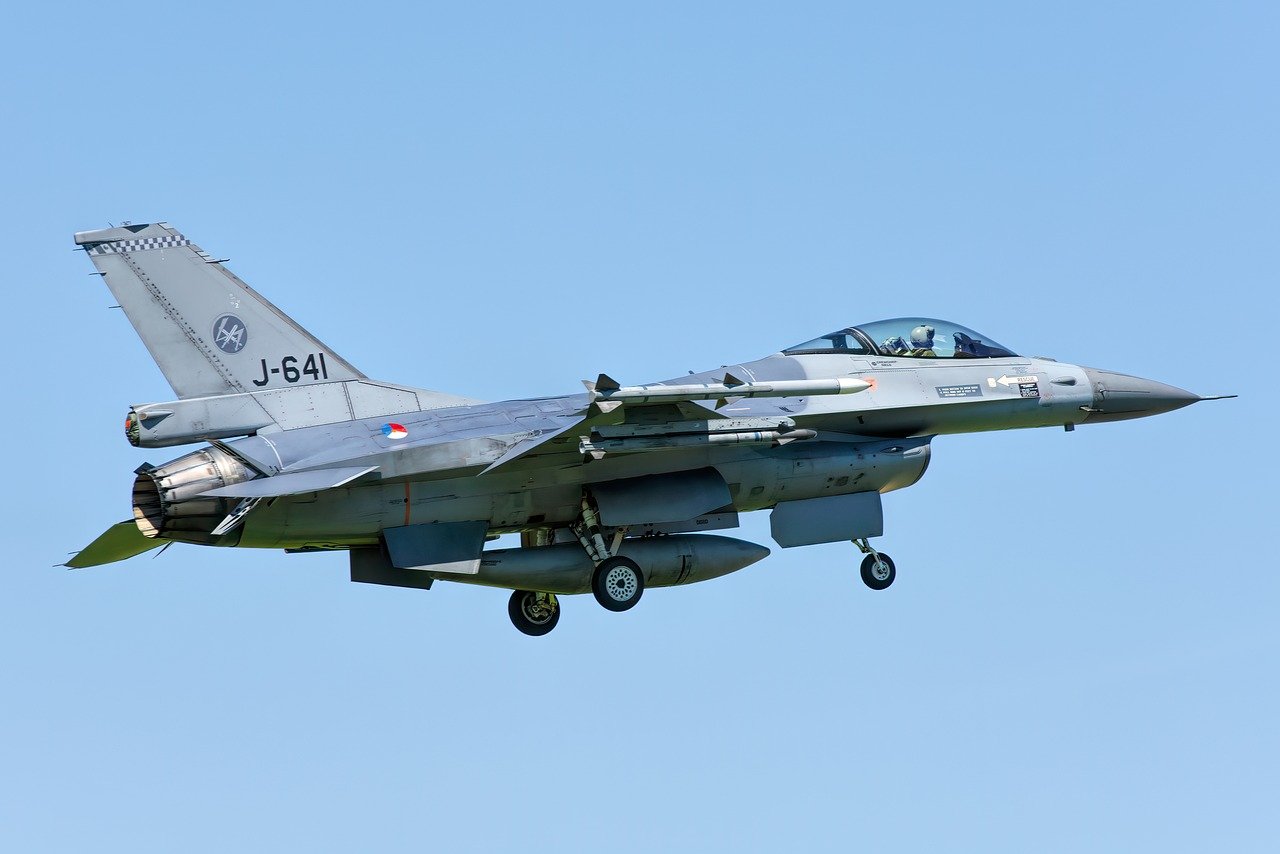
Artificial Intelligence Applications
Artificial Intelligence (AI) is not just a buzzword; it's a game-changer in the realm of military logistics. Imagine a world where supply chain issues are predicted before they even arise. With AI, this is becoming a reality. By leveraging vast amounts of data, AI algorithms can analyze patterns and predict future demands. This predictive capability allows military units to maintain optimal inventory levels, ensuring that they have the right supplies at the right time, without overstocking or understocking.
But the impact of AI doesn’t stop at demand forecasting. Consider the potential of AI-driven systems in enhancing operational readiness. These systems can analyze data from various sources, including historical data and real-time inputs, to make recommendations for resource allocation. For instance, if a particular base is running low on medical supplies, AI can automatically flag this issue and suggest the fastest route for resupply, thereby minimizing downtime and ensuring that troops are adequately equipped.
Furthermore, AI can play a pivotal role in automating routine tasks within the supply chain. Tasks that once required human intervention, such as inventory checks and order processing, can now be handled by intelligent systems. This not only speeds up the logistics process but also reduces the risk of human error, which can be critical in high-stakes military operations. The efficiency gained through automation allows personnel to focus on more strategic tasks, ultimately enhancing overall mission effectiveness.
In addition to these applications, AI can significantly improve decision-making processes. By utilizing advanced data analytics, military leaders can gain insights into supply chain performance, identifying bottlenecks and inefficiencies that may not be immediately apparent. Consider a scenario where a unit is deployed in a remote location; AI can analyze supply routes, weather conditions, and even potential threats to recommend the safest and most efficient paths for transport. This level of insight is invaluable in ensuring that resources are delivered promptly and safely.
Moreover, the integration of AI with other emerging technologies, such as the Internet of Things (IoT) and big data analytics, creates a synergistic effect that enhances military logistics even further. For example, IoT devices can provide real-time data on equipment status, which AI can analyze to predict maintenance needs, ensuring that vehicles and machinery are always operational. This proactive approach to maintenance can prevent costly breakdowns and extend the lifespan of critical equipment.
As we look to the future, the potential for AI in military supply chains appears boundless. The combination of predictive analytics, automation, and real-time decision-making capabilities positions AI as an essential component in modernizing military logistics. By embracing these technologies, military organizations can enhance their operational readiness, streamline their supply chains, and ultimately save lives on the battlefield.
- How does AI improve military supply chain efficiency?
AI enhances efficiency by predicting demand, automating routine tasks, and providing data-driven insights for better decision-making. - What role does data analytics play in AI applications?
Data analytics allows AI to analyze patterns and trends, leading to more informed decisions and optimized resource allocation. - Can AI help in reducing human error in logistics?
Yes, by automating processes and providing real-time data, AI significantly reduces the risk of human error in military logistics. - What are the future implications of AI in military supply chains?
The future implications include enhanced operational readiness, improved resource management, and the ability to respond quickly to changing conditions on the battlefield.

3D Printing in Manufacturing
3D printing is revolutionizing the way military supply chains operate, offering a plethora of advantages that traditional manufacturing methods simply can't match. Imagine being able to produce essential parts on-demand, right in the field, without having to wait for long lead times or deal with complex logistics. This technology not only enhances flexibility in manufacturing but also significantly reduces the time required to get critical equipment into the hands of service members. The ability to create components as needed means that military units can adapt quickly to changing operational requirements, ensuring they are always mission-ready.
One of the most striking benefits of 3D printing in military manufacturing is its potential to minimize waste. Traditional manufacturing processes often generate a significant amount of scrap material, which not only contributes to environmental concerns but also increases costs. In contrast, 3D printing is an additive process, meaning that items are built layer by layer, using only the material necessary for the final product. This efficiency not only saves resources but also allows for the production of complex geometries that would be impossible or prohibitively expensive to create through conventional methods.
Furthermore, the implications of 3D printing extend beyond just the immediate production of parts. The technology fosters a culture of innovation within military operations. As units become more accustomed to using 3D printers, they can experiment with designs and create custom solutions tailored to specific challenges they face in the field. This capability aligns perfectly with the military's need for agility and adaptability in modern warfare.
To illustrate the impact of 3D printing in military supply chains, consider the following table that outlines some key applications:
| Application | Description | Benefits |
|---|---|---|
| Spare Parts Production | On-site production of spare parts for vehicles and equipment. | Reduces downtime and logistics costs. |
| Custom Equipment | Creation of specialized tools and equipment tailored to mission needs. | Enhances operational efficiency and effectiveness. |
| Field Deployable Solutions | Mobile 3D printing units that can be transported to various locations. | Increases flexibility and responsiveness in combat zones. |
Moreover, as material science advances, the possibilities for 3D printing in military applications continue to expand. Innovations in materials, such as lightweight composites and advanced polymers, are paving the way for stronger, more durable products. These materials not only improve the performance of printed parts but also contribute to the overall sustainability of military operations. By utilizing materials that are more resilient and lightweight, military units can enhance their operational capabilities while minimizing their logistical footprint.
In conclusion, 3D printing is not just a passing trend; it is a game-changer for military supply chains. The ability to manufacture parts on-demand, reduce waste, and foster innovation positions the military to be more agile and effective in the face of evolving challenges. As technology continues to advance, the integration of 3D printing into military manufacturing processes will likely grow, shaping the future of how armed forces operate.
- What is 3D printing? 3D printing, or additive manufacturing, is a process that creates three-dimensional objects by layering materials based on digital models.
- How does 3D printing benefit military supply chains? It allows for on-demand production, reduces lead times, minimizes waste, and enhances customization of parts and equipment.
- What types of materials are used in military 3D printing? A variety of materials are used, including plastics, metals, and advanced composites, depending on the application requirements.
- Can 3D printing be used in combat zones? Yes, field deployable 3D printing solutions can be transported to combat zones to produce necessary equipment and parts on-site.

Field Deployable Solutions
Imagine a battlefield where the need for supplies can be met almost instantly, where soldiers can produce the equipment they require right at their location. Field deployable 3D printing solutions are making this vision a reality, revolutionizing how military units operate in combat zones. These advanced systems allow for the on-site production of essential parts and equipment, drastically reducing the time it takes to receive supplies from traditional logistics channels. In scenarios where every second counts, the ability to print critical components on-demand can mean the difference between mission success and failure.
One of the most significant advantages of field deployable 3D printing is its ability to enhance supply chain efficiency. With these systems, military units can bypass lengthy procurement processes and the associated delays. Instead of waiting for shipments that could take days or even weeks, troops can create what they need using a digital file and a 3D printer. This capability not only speeds up the supply chain but also allows for greater flexibility in responding to changing operational needs. For instance, if a unit requires a specific part that isn't readily available, they can simply print it, saving both time and resources.
Moreover, the implications of field deployable 3D printing extend beyond just speed. It also significantly reduces the logistical burden on supply chains. Traditional logistics often involve transporting large quantities of spare parts, which can be cumbersome and expensive. With 3D printing, military units can maintain a smaller inventory of raw materials and print parts as needed. This shift not only cuts down on transportation costs but also minimizes the risk of overstocking or running out of critical supplies.
To illustrate the impact of field deployable solutions, consider the following table that compares traditional supply methods with 3D printing capabilities:
| Aspect | Traditional Supply Methods | Field Deployable 3D Printing |
|---|---|---|
| Lead Time | Days to Weeks | Minutes to Hours |
| Logistical Complexity | High | Low |
| Inventory Requirements | High | Minimal |
| Customization | Limited | High |
Another compelling aspect of these is their ability to support customization. Military operations are often unique, requiring specific adaptations to equipment to meet particular mission demands. With 3D printing, customization becomes a straightforward process. Units can design and print tailored solutions that fit their exact needs, whether it's a unique tool, a replacement part, or even specialized equipment. This level of adaptability is crucial in modern warfare, where the landscape and requirements can change rapidly.
As we look to the future, the integration of field deployable 3D printing solutions into military supply chains appears to be a game-changer. By offering unprecedented speed, flexibility, and customization, these technologies not only enhance operational capabilities but also ensure that our armed forces are better equipped to face the challenges of tomorrow. Imagine a soldier in the field, armed not just with weapons but with the power of technology to create what they need, when they need it. The battlefield is evolving, and so are the tools that support our troops.
- What is field deployable 3D printing? Field deployable 3D printing refers to the technology that allows military units to produce equipment and parts on-site using 3D printers, eliminating the need for traditional supply chains.
- How does 3D printing improve military logistics? It reduces lead times, lowers logistical complexity, minimizes inventory requirements, and allows for customization of parts and equipment.
- Are there limitations to field deployable 3D printing? While it offers many advantages, it may be limited by the types of materials that can be used and the complexity of the parts being printed.
- What materials are typically used in military 3D printing? Common materials include various plastics, metals, and composites, depending on the required strength and functionality of the printed parts.

Material Innovations
In the realm of military supply chains, are proving to be game-changers, paving the way for a new era of efficiency and adaptability. As the demands of modern warfare evolve, so too must the materials that support our armed forces. Imagine a world where soldiers can print their own equipment on-site, using materials that are not only durable but also lightweight and versatile. This is no longer just a dream; it’s becoming a reality thanks to advancements in 3D printing technologies and materials science.
One of the most exciting developments in this field is the emergence of advanced polymers and composite materials. These materials are designed to withstand extreme conditions while remaining lightweight, which is crucial for military applications. For instance, imagine a soldier carrying a drone made from a high-strength polymer that can endure harsh weather without adding unnecessary weight. This not only enhances mobility but also improves the overall effectiveness of military operations.
Moreover, the integration of metallurgical innovations has led to the creation of new alloys that are stronger and more resistant to corrosion than their predecessors. These materials can be utilized in everything from vehicle components to weaponry, ensuring that military assets remain operational even in the most challenging environments. The ability to produce these materials on-demand through 3D printing means that supply chains can be more responsive, reducing lead times and enhancing operational readiness.
Another fascinating aspect of material innovations is the development of biodegradable materials. In an era where environmental concerns are paramount, the military is exploring options that minimize ecological footprints. Biodegradable materials can be used for packaging and other non-critical components, ensuring that military operations do not leave a lasting negative impact on the environment. This shift not only demonstrates a commitment to sustainability but also aligns with the growing public expectation for responsible military practices.
To give you a clearer picture of the impact of these innovations, consider the following table that illustrates some of the key materials being explored for military applications:
| Material Type | Properties | Applications |
|---|---|---|
| Advanced Polymers | Lightweight, durable, weather-resistant | Drones, protective gear |
| Composite Materials | High strength-to-weight ratio | Vehicle components, weaponry |
| Biodegradable Materials | Environmentally friendly | Packaging, non-critical components |
| Innovative Alloys | Corrosion-resistant, strong | Military vehicles, aircraft |
As we look to the future, it’s clear that the integration of these material innovations will not only enhance the efficiency of military supply chains but also revolutionize how our armed forces operate. By leveraging cutting-edge materials, the military can ensure that its personnel are equipped with the best tools available, ultimately leading to improved mission success rates and operational effectiveness.
- What are advanced polymers? Advanced polymers are synthetic materials known for their lightweight and durable properties, making them ideal for military applications.
- How does 3D printing impact military supply chains? 3D printing allows for on-demand production of parts, reducing lead times and enhancing flexibility in manufacturing.
- What are biodegradable materials used for in the military? Biodegradable materials are primarily used for packaging and non-critical components to minimize environmental impact.
- Why are innovative alloys important? Innovative alloys provide enhanced strength and corrosion resistance, which are crucial for military vehicles and equipment operating in harsh environments.
Frequently Asked Questions
- What role does automation play in military supply chains?
Automation is a game-changer in military logistics! It streamlines processes, reduces human error, and speeds up operations. By implementing automated systems, military supply chains can enhance efficiency and ensure that resources are delivered on time, which is crucial in high-stakes situations.
- How does blockchain technology improve military logistics?
Blockchain technology offers a revolutionary way to ensure transparency and traceability in military supply chains. It secures transactions and improves accountability, making it easier to track supplies from origin to destination. This level of transparency can significantly enhance trust among stakeholders and reduce the risk of fraud.
- What are smart contracts and how do they benefit military procurement?
Smart contracts are like automated agreements that execute actions based on predefined conditions. In military procurement, they streamline processes by reducing delays and ensuring compliance, making transactions faster and more reliable. Imagine having a digital assistant that handles contracts for you—smart contracts do just that!
- Why is real-time tracking important for military supply shipments?
Real-time tracking systems are essential for military units to monitor supply shipments instantly. This capability provides enhanced visibility, allowing commanders to make informed decisions during mission planning and execution. It’s like having a GPS for your supplies—knowing where everything is at all times can make all the difference!
- How does data analytics enhance military supply chain operations?
Data analytics plays a crucial role in optimizing supply chain operations by providing data-driven insights. These insights help military leaders make better decisions regarding resource allocation and inventory management. It’s akin to having a crystal ball that predicts future needs and helps avoid shortages!
- In what ways is AI transforming military logistics?
Artificial Intelligence (AI) is revolutionizing military logistics by predicting demand and optimizing inventory levels. This technology allows military planners to anticipate needs and adjust supplies accordingly, ensuring that troops have what they need when they need it. Think of AI as a smart assistant that keeps everything running smoothly!
- What advantages does 3D printing offer for military supply chains?
3D printing is reshaping military supply chains by enabling on-demand production of essential parts. This technology reduces lead times and enhances flexibility, allowing military units to produce what they need, when they need it, right on the spot. It’s like having a mini-factory in your pocket!
- What are field deployable 3D printing solutions?
Field deployable 3D printing solutions allow military units to produce necessary equipment on-site, which is a game-changer for supply chain efficiency. This capability means that troops can create parts and tools as needed, minimizing reliance on long supply chains and enhancing operational capabilities in combat zones.
- How are material innovations impacting military 3D printing?
Innovations in materials science are expanding the possibilities for military applications of 3D printing. New materials can improve the strength, durability, and functionality of printed parts, making them more suitable for demanding military environments. It’s like upgrading from standard tools to high-performance gear!


